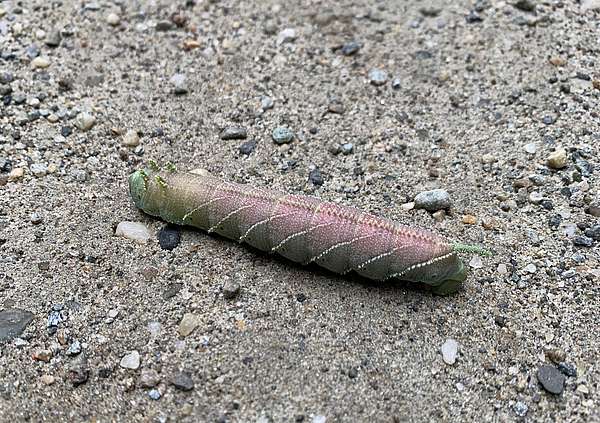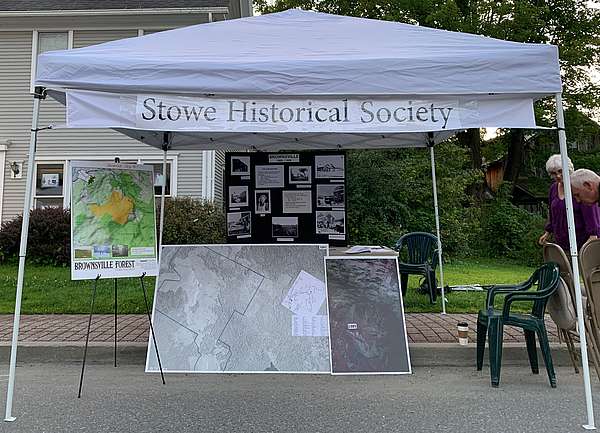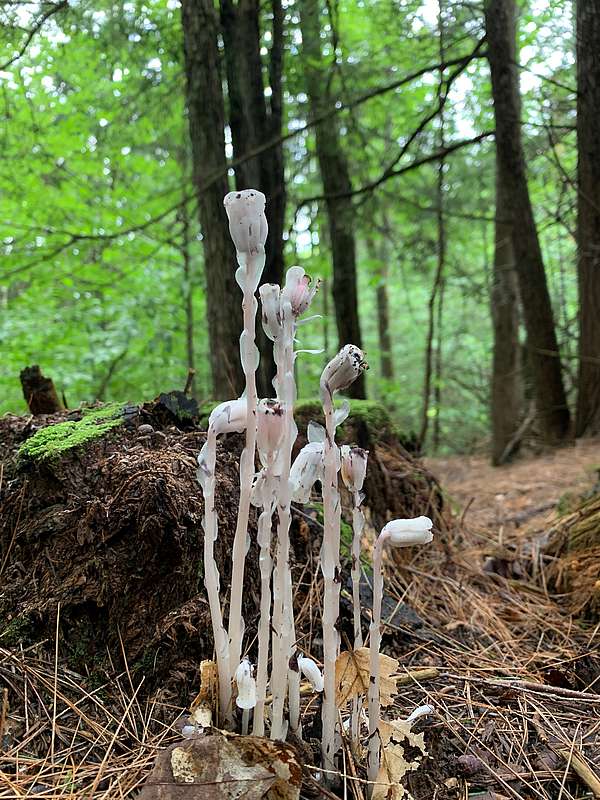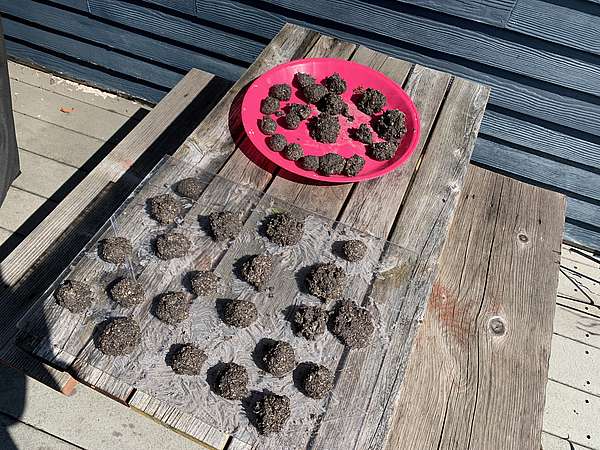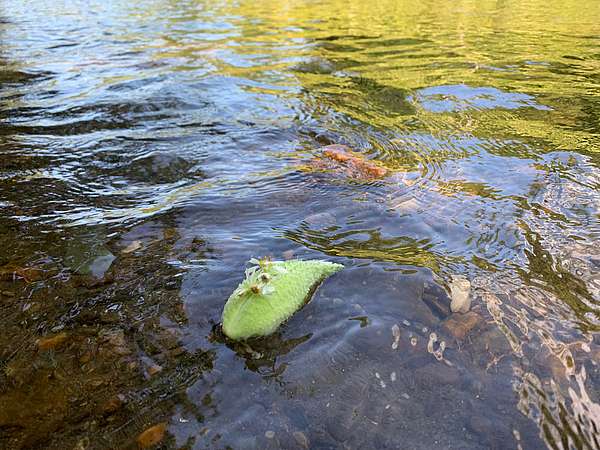A lot of fun plants and creatures have emerged as the hot weather is starting to cool down and school starts again. Before everyone went back to school, some of the camps I was running programs with found some very fun and interesting things!
On August 21st, we had the <link conserved properties brownsville>Brownsville-Story Ridge Forest ribbon cutting ceremony! There was a large turnout, and after the ceremony we went on a walk through the property. We found some cool things, including an Elm Sphinx caterpillar (Ceratomia amyntor) crossing Brownsville Road. This caterpillar was about 4 inches long, and is a light green/pink color. According to Butterflies & Moths of North America, once it is fully grown, its wingspan will be up to 3 ¼ to 4 ½ inches (8.2 – 11.5cm) which is huge!
In addition to the wonderful ribbon cutting ceremony at Brownsville-Story Ridge Forest, I tabled with Stowe Historical Society at Art on Park (an event that happens in Stowe every Thursday from July-August). We talked to visitors about the fun and exciting history of Brownsville-Story Ridge Forest. If you are in Stowe, stop by the Stowe Historical Society Museum and check out their “Brownsville: Past and Present” exhibit that opened earlier this summer.
On one of my final outings with MudCity Adventures, we did a quick exploration through <link conserved properties wiessner-woods>Wiessner Woods looking for amphibians, visiting the gnomes, and hanging out at the sugarhouse. During our time there, we found several red-backed salamanders (Plethodon cinereus), an American toad (Anaxyrus americanus), and ghost pipe (Monotropa uniflora). The ghost pipe (also known as Indian pipe) is a white wildflower that upon first glance looks a lot like fungi. The wildflower is completely white and has no chlorophyll whatsoever. You’re probably thinking “How does this plant survive if it can photosynthesize?” According to the U.S. Forest Service, this plant uses nutrients from tree roots! It does this by using a mycorrhizal fungi as a “passage way” to collect nutrients. The trees photosynthesize, and the nutrients pass through the fungi into the ghost pipe. To learn more about this process, click here.
Last week, I had a program with Learning Ladder Children’s Center. We made wildflower seed balls and played games. Wildflower seed balls are a fun way to plant wildflowers in your garden. You only need a few materials to make this awesome craft! There are many recipes online to choose from, but we made ours from clay, soil, water, and flower seed.
This week (August 26th – 30th), I wrapped up with MudCity Adventures. It has been so fun spending time with the group and running programs with them! To finish off our last day, we went for a bike ride from their home base in Stowe Village, and rode to <link conserved properties dumont>DuMont Meadow in Moscow. The bike ride was beautiful, and the weather was perfect! While some of the campers biked on Alex’s Trail, a few of them stuck with me and went exploring. We found a lot of Jewelweed (Impatiens capensis), American groundnut (Apios americana), Joe-Pye weeds (Eutrochium, sp.), wild black raspberry (Rubus occidentalis), and invasive Japanese Knotweed (Fallopia japonica).
Jewelweed is a fun flower because its fruit is a small capsule. The capsules are usually hanging near the flower on the plant, and if you touch the bottom of the capsule very delicately, it will make a mini seed explosion. Try it out the next time you see some Jewelweed in the woods! Depending on where you are, if you’re driving by a riverbank or into the woods, you may also stumble upon some Japanese Knotweed. Japanese Knotweed is an invasive herbaceous shrub native to Asia, and was introduced to the United States sometime in the 1800s. It is a fast growing plant that out compete other native species. It is important to remember that when you are removing this plant, it can grow from seed, stem, or root. Be sure to not leave any part of the plant behind! For more information, click here. After we finished looking at plants, we spent time down by the Little River, and made boats using Milkweed pods and sailed them down the river.
I am looking forward to running more programs and open houses over the next few weeks! Stay tuned!
